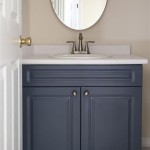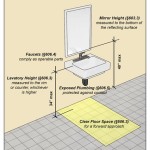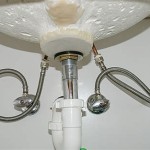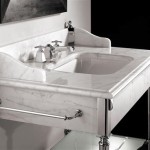Essential Aspects of Undercounter Bathroom Sinks
Undercounter bathroom sinks play a crucial role in the functionality and aesthetics of a bathroom. They provide a sleek and seamless look while maximizing space and offering practical features. Understanding the essential aspects of undercounter bathroom sinks is vital for making informed decisions and selecting the best sink for your needs.
This article will delve into the essential aspects of undercounter bathroom sinks, including materials, mounting options, sizes and shapes, drain types, and special features, providing a comprehensive guide to help you choose the perfect sink for your bathroom.
Materials
Undercounter bathroom sinks are typically made from a variety of materials such as porcelain, ceramic, solid surface, stainless steel, and granite. Porcelain and ceramic sinks are popular choices for their durability and ease of cleaning, while solid surface sinks offer a more modern and seamless look. Stainless steel sinks are known for their durability and resistance to rust and stains, making them ideal for frequent use. Granite sinks provide a natural and upscale aesthetic, but they require more maintenance compared to other materials.
Mounting Options
Undercounter bathroom sinks are available in two main mounting options: top mount and under mount. Top mount sinks are installed on top of the countertop, with the rim of the sink visible. Under mount sinks are installed beneath the countertop, creating a more integrated and seamless look. The choice between top mount and under mount depends on personal preference, countertop material, and the desired aesthetic.
Sizes and Shapes
Undercounter bathroom sinks come in a wide range of sizes and shapes to accommodate different bathroom layouts and preferences. The size of the sink is determined by the length, width, and depth of the basin. The shape can vary from traditional rectangular or square sinks to more contemporary oval, round, or vessel-style sinks. Choosing the right size and shape ensures both functionality and visual appeal in the bathroom.
Drain Types
Undercounter bathroom sinks have different drain types that affect the efficiency of water drainage and the overall functionality of the sink. The most common drain types are pop-up drains, which can be opened and closed manually, and lift-and-turn drains, which are operated by a lever or knob to lift and open the drain stopper. Other drain types include toe-touch drains and sensor-activated drains, which provide hands-free operation.
Special Features
Undercounter bathroom sinks may offer additional features for enhanced convenience and functionality. These features include overflow drains, which prevent water from overflowing the sink, and soundproofing pads, which reduce noise and vibrations during use. Some sinks also come with integrated soap dispensers or towel bars, providing a practical and stylish solution for bathroom organization.

Undermount Bathroom Sink Buyer S Guide The Family Handyman

Undermount Bathroom Sinks

What S An Undermount Sink 2024 Guide To Sinks With Examples Badeloft

Horow 19 11 16 In Oval Porcelain Ceramic Undermount Bathroom Sink White With Overflow Drain Hr R5040d The Home Depot

Scarabeo 5135 By Nameek S Teorema 2 Undermount Bathroom Sink White Ceramic Thebath

American Standard Studio Carre Square Undercounter Bathroom Sink With Less Faucet Deck In White 0426000 020 The Home Depot

K288295 By Kohler Verticyl 19 3 4 Rectangular Undermount Bathroom Sink Studio41

Undermount Bathroom Sink Design Ideas We Love Modern Vanity Wood

Miseno Mno1713bwh 20 X 16 Rectangular Undermount Build Com

Scarabeo 8090 By Nameek S Miky 18 Inch Rectangular Ceramic Undermount Sink Thebath
Related Posts







